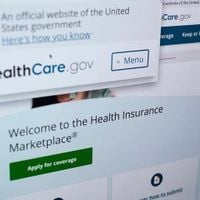Across the United States, millions of Americans are bracing themselves for a dramatic surge in health insurance premiums as open enrollment for 2026 approaches. The sticker shock is real, and the reasons are both political and economic—rooted in the ongoing federal government shutdown and the looming expiration of crucial tax credits that have kept Affordable Care Act (ACA) marketplace plans within reach for many.
According to a recent report by KFF, the average marketplace consumer nationwide will pay $1,904 in annual premiums for 2026. This figure reflects an 18% spike in premiums, the steepest year-over-year increase since the ACA marketplaces were launched 12 years ago, as cited by The Washington Post. The primary culprit: Congress’s failure to extend the enhanced ACA tax credits, which were first introduced during the COVID-19 pandemic to help Americans weather unprecedented economic turmoil.
Nowhere is this crisis more visible than in Washington state, where some 300,000 residents buy their health coverage through the Washington Health Benefit Exchange. As reported by local news outlets, these Washingtonians are staring down an average premium hike of 21% for next year. The reason? The very same expiring federal tax credits that have become a political football in the ongoing government shutdown, which began on October 1, 2025, and has now stretched into its fourth week.
The open enrollment window for 2026 coverage officially opens on November 1 and runs through January 15. But the anxiety has already begun. On October 21, the Washington Healthplanfinder portal unveiled new tools to let shoppers preview next year’s plans—and the results were sobering. Maya Tussing, a small business owner from Woodinville, discovered that her family’s bronze plan, which currently costs about $1,100 a month, will jump to over $2,100 per month in 2026. That’s a staggering $12,000 increase for the year. “That’s steep,” Tussing told local reporters, adding that she and her husband are scrambling to take on more work and cut costs wherever possible. “There’s only so much you can do.”
For many, these price increases are not just numbers on a page—they represent impossible choices. According to U.S. Sen. Maria Cantwell, D-Wash., her constituents face a dilemma: “Pay hundreds or even thousands of dollars more next year for the exact same plan, downgrade their coverage, or forego health insurance altogether.” She continued, “Congress must act immediately to extend the expiring Affordable Care Act tax credits or health care will be added to their list of financial burdens.”
The pain isn’t limited to Washington. In Minnesota, as reported by Axios, residents buying insurance through the state’s ACA marketplace, MnSure, are facing an average premium increase of 22%. Commerce commissioner Grace Arnold warned lawmakers that eligible Minnesotans could see their costs soar by $2,000 a year if the tax credits are allowed to expire at the end of 2025. Small group premiums for Minnesota employers with under 50 workers are set to rise 14% on average, while large employers nationwide expect premium costs to jump as much as 10%. More than half of employers plan to shift some of those increases onto workers this year, up from 44% last year, according to a Mercer forecast cited by Axios.
Back in Washington, the expiration of the subsidies could have even more dire consequences. State officials estimate that 80,000 residents will forgo coverage entirely if the tax credits are not extended. The credits currently save enrollees an average of $1,330 per year, with seniors saving more than $1,900 annually, according to Gov. Bob Ferguson’s office. Some counties are facing astronomical hikes: Yakima County could see premiums rise by 133%, Snohomish and Pierce counties by 95%, King County by 94%, and Spokane County by 86%, according to a report from Sen. Cantwell’s office.
The enhanced premium tax credits, which function as discounts for middle-income households purchasing their own insurance, have been a lifeline since their introduction during the pandemic. But with their expiration imminent—and Congress deadlocked—many are left in limbo. “Congress can end this crisis if House Republicans return to D.C. and negotiate in good faith on a path forward to reopen the government and address health care costs,” wrote U.S. Representative Suzan DelBene, D-Wash., in a statement.
The political standoff is at the heart of the problem. Democrats in the U.S. Senate have refused to vote to reopen the government without extending the subsidies, while Republicans have not yielded to that demand. Some Republicans have expressed openness to an extension but insist on first resolving the government funding impasse; others oppose any extension outright. The uncertainty has left insurance companies and state regulators scrambling. In Washington, insurers filed two sets of proposed rate increases—one with the tax credits incorporated, and one without. If Congress acts, the state insurance commissioner could approve revised rates, but the process is complex. “It would be weeks, not days, until the technical changes can be incorporated. But we will make it happen,” said Ingrid Ulrey, CEO of the Washington Health Benefit Exchange.
For many individuals, the end of the tax credits could mean the end of affordable health insurance. Rebecca Staffel, a freelance marketing consultant in Ballard, told reporters that her monthly premium would jump from just under $400 to over $2,100 next year if the credits disappear. “It’s pretty awful,” she said. “We can’t do that.” Faced with limited options, Staffel and her husband are rushing to schedule medical appointments before the end of the year and are even considering going without insurance. “We feel fortunate that we’re healthy,” she said. “We can think about gambling.”
State officials are searching for solutions. The Washington exchange is seeking $130 million per year in state funding for its Cascade Care Savings program, which helps residents making up to 250% of the federal poverty line. This program, launched in 2023, assists nearly 100,000 people, but it cannot fully compensate for the loss of federal support. “Some of our customers will see significant premium increases due to the scheduled expiration of the federal enhanced premium tax credits at the end of 2025,” Ulrey acknowledged. “However, others might be surprised to learn they can retain their same coverage at similar or lower cost.”
As open enrollment approaches, the sense of urgency is growing. Renewal notices are set to go out in the final week of October, and enrollees are being encouraged to shop around and compare plans. The window shopping period for plans began Tuesday, but the uncertainty lingers. If Congress acts to extend the tax credits after people have already selected their 2026 plans, it’s unclear how quickly relief could be delivered. Ulrey remains hopeful: “We stand ready to pass that relief onto our customers.”
The stakes are high, and the clock is ticking. For millions of Americans, the coming weeks will determine whether health insurance remains an option—or becomes yet another casualty of political gridlock.

